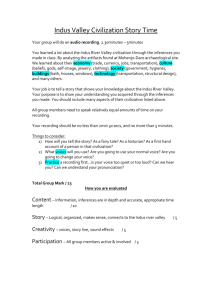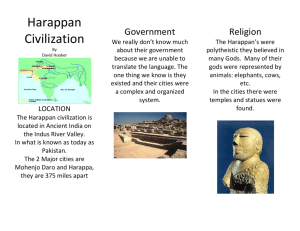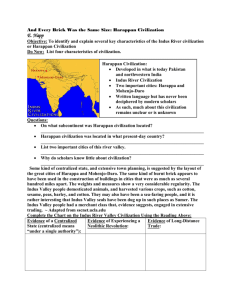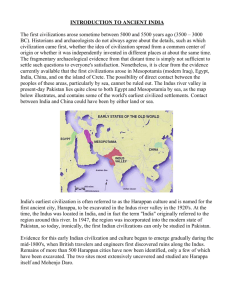Planned Cities on the Indus
advertisement
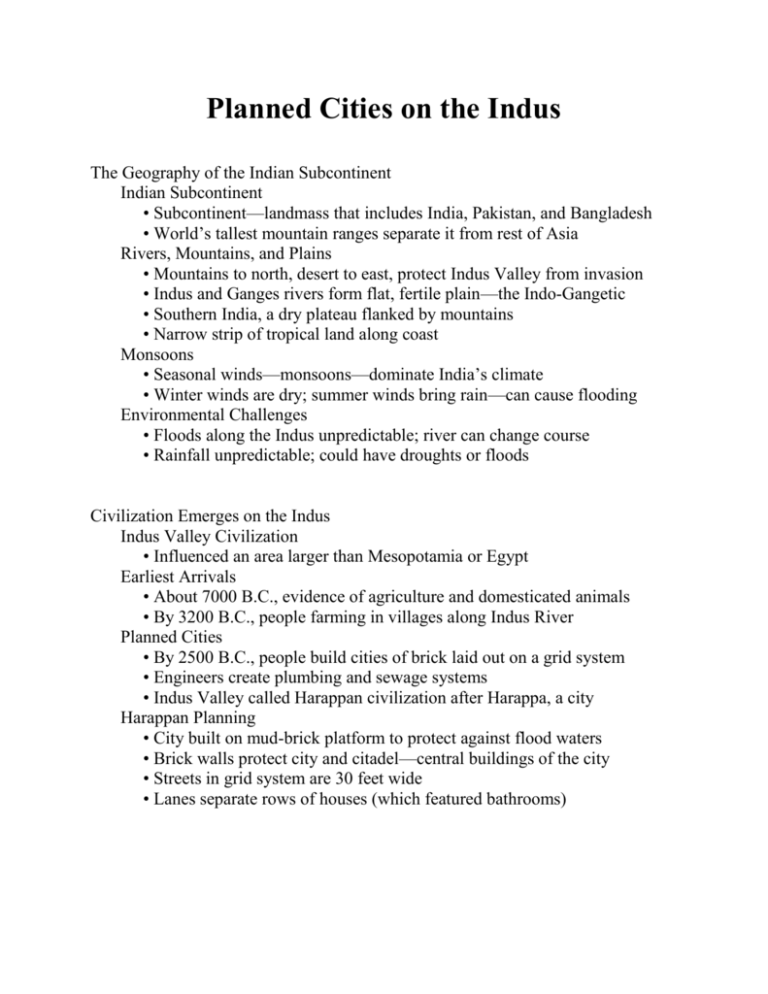
Planned Cities on the Indus The Geography of the Indian Subcontinent Indian Subcontinent • Subcontinent—landmass that includes India, Pakistan, and Bangladesh • World’s tallest mountain ranges separate it from rest of Asia Rivers, Mountains, and Plains • Mountains to north, desert to east, protect Indus Valley from invasion • Indus and Ganges rivers form flat, fertile plain—the Indo-Gangetic • Southern India, a dry plateau flanked by mountains • Narrow strip of tropical land along coast Monsoons • Seasonal winds—monsoons—dominate India’s climate • Winter winds are dry; summer winds bring rain—can cause flooding Environmental Challenges • Floods along the Indus unpredictable; river can change course • Rainfall unpredictable; could have droughts or floods Civilization Emerges on the Indus Indus Valley Civilization • Influenced an area larger than Mesopotamia or Egypt Earliest Arrivals • About 7000 B.C., evidence of agriculture and domesticated animals • By 3200 B.C., people farming in villages along Indus River Planned Cities • By 2500 B.C., people build cities of brick laid out on a grid system • Engineers create plumbing and sewage systems • Indus Valley called Harappan civilization after Harappa, a city Harappan Planning • City built on mud-brick platform to protect against flood waters • Brick walls protect city and citadel—central buildings of the city • Streets in grid system are 30 feet wide • Lanes separate rows of houses (which featured bathrooms) Harappan Culture Language • Had writing system of 400 symbols, but scientists can’t decipher it Culture • Harappan cities appear uniform in culture; no great social divisions • Animals important to the culture; toys suggest prosperity Role of Religion • Priests closely linked to rulers • Some religious artifacts reveal links to modern Hindu culture Trade • Had thriving trade with other peoples, including in Mesopotamia Indus Valley Culture Ends Harappan Decline • Signs of decline begin around 1750 B.C. • Earthquakes, floods, soil depletion may have caused decline • Around 1500 B.C., Aryans enter area and become dominant




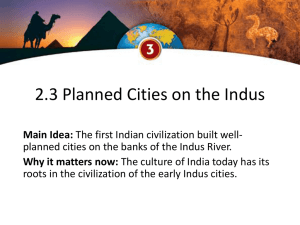
![Indus[1] - ridgeaphistory](http://s3.studylib.net/store/data/006736077_1-c59280ecd30594bac8ab21ec7bce4db4-300x300.png)

